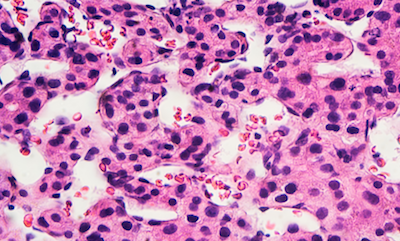New Method for Evaluating Cancer Risk of Chemicals Is Quick, Precise, Inexpensive.

Of the roughly 1.7 million cancer cases seen in the US each year, 90 to 95 percent are not caused by heritable genetic factors, making environmental exposures a major suspect in these cases. But of the tens of thousands of chemicals in commercial use, less than two percent have been thoroughly tested for their potential carcinogenicity—that is, whether exposure to a chemical increases a person’s long-term cancer risk—in part due to the extremely costly and time-consuming nature of the current chemical-screening process.
Now, researchers from the School of Public Health and the School of Medicine have developed and evaluated a fast, accurate, and cost-effective approach to assessing the carcinogenicity of chemicals. As a result, they have generated one of the largest toxicogenomics datasets to date, and have made the data and results publicly accessible through a web portal at carcinogenome.org.
The study was published online in the journal Environmental Health Perspectives.
“The method we developed, once further optimized and validated, would provide for a fast and cost-effective approach to the prioritization of chemicals for further (more expensive/extensive) testing,” says the study’s senior and corresponding author, Stefano Monti, associate professor of biostatistics at SPH and of medicine at MED. “Additionally, our approach could be easily extended to evaluate adverse effects of exposure other than carcinogenicity, such as endocrine disruption, metabolic disruption, etc.”
The researchers exposed human cell lines to hundreds of individual chemicals known to be carcinogens and non-carcinogens. They then generated gene expression profiles from the exposed cell lines, and put these profiles into a machine learning algorithm that was trained to distinguish between carcinogens and non-carcinogens. The accuracy of the model was then evaluated by testing its capability of correctly “guessing” the carcinogenicity of known chemicals.
Although more work needs to be done before this approach can be applied in regulatory and clinical settings, the researchers wrote that they hoped this study will stimulate others to take on the challenge and join the effort to develop more cost-effective approaches to chemical screening, and the consequent elimination of hazardous substances from the environment.
The study was co-authored by David Sherr, professor of environmental health. The other co-authors were Amy Li of MED; Xiaodong Lu, Ted Natoli, Joshua Bittker, and Aravind Subramanian of the Broad Institute of MIT and Harvard; and Nisha S. Sipes and Scott Auerbach of the National Institute of Environmental Health Sciences.